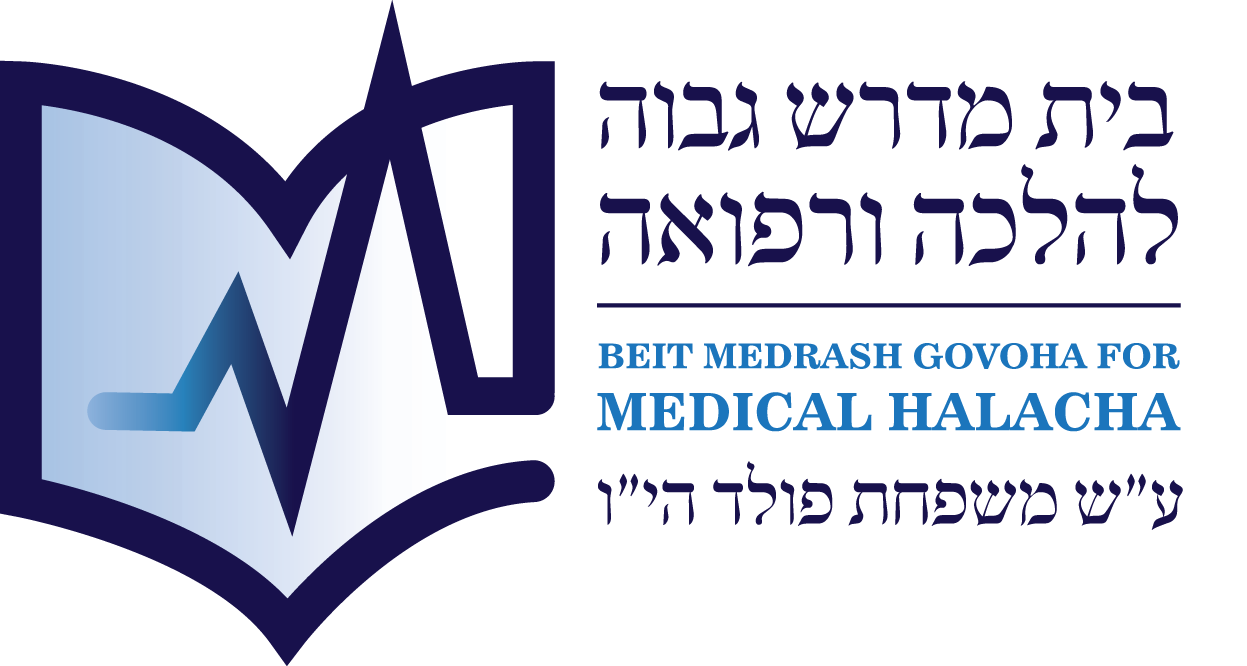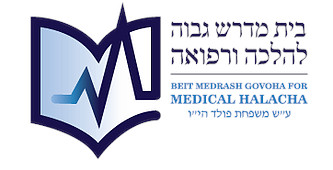Halachos of Erev Pesach[1]
Ta’anis Bechorim
- It is customary for male firstborns to fast on Erev Pesach.[2] Nowadays, the custom is to make or join a Siyum and partake in the Seudas Mitzva, thus exempting oneself from fasting.[3] One should eat a Kezayis at the Siyum rather than just drinking a small amount.[4]
- b’Sha’as haDechak, such as when caring for patients in the hospital and it is not possible to attend a Siyum, a person may listen to a Siyum over the phone.[5]
- A weak or elderly person with a headache or eye pain who cannot make or participate in a Siyum[6] on Erev Pesach is exempt from fasting. The same applies to one who is almost certain he will be unable to eat Matza and Maror and to drink the Arba Kosos. In these cases, it is preferable only to snack and one should not eat a full meal.[7]
Melacha on Erev Pesach
- A person may not perform actual Melachaon Erev Pesach after Chatzos,[8] however, he may ask a Nachri to do it for him.[9] Therefore, one who has a Nachri caregiver may instruct him to wash his clothes[10] or cut his hair[11] even after Chatzos.
Matza on Erev Pesach
- One may not eat Matza on Erev Pesach.[12] Some opinions permit[13] eating boiled Matza or kneidlach before the 10th hour, while others forbid it.[14] Similarly, some are stringent[15] regarding cake made from Matza meal while others are lenient.[16]
- If allowing Chametz to be eaten on the morning of the 14th of Nissan will cause difficulty because patients will take it to their rooms, the hospital may provide them with non-Shemura Matza that was not baked l’Shem Mitzvas Matza. It is preferable to boil the Matza in chicken soup or vegetables or to fry it in oil until its taste changes. As mentioned above, many opinions permit eating Matza in this form on Erev Pesach.[17]
- A person should arrange his meals on Erev Pesach such that he will eat the Matza on Seder night with an appetite. If he has digestive issues such that eating in the late afternoon will prevent him from eating Matza with an appetite, he should refrain.[18]
Erev Pesach that fallsonShabbos
- When Erev Pesach falls on Shabbos, it is difficult to eat regular Shabbos meals because Chametz is likely to spread throughout the clean house.[19] One option may be to use Matza Ashira (“egg Matza”). Sephardim may eat Matza Ashira until the 10th hour.[20] Ashkenazim may only do so until the Zman Achilas Chametz.[21] A Choleh or elderly person may eat Matza Ashira throughout the day.[22]
- In a case of need (e.g., if it will be difficult to clean the house or one’s dentures of crumbs), a person may use Matza boiled in a Kli Rishon for his Shabbos meals.[23] (Care should be taken not to break the Matza into pieces smaller than a Kezayis so that the obligation of haMotzi and Birkas haMazon will apply.)[24]
- A Choleh or elderly person who wants to eat Chametz in the morning but must eat the meal before davening Musaf to finish before the Zman Achila may do so.[25]
- If a person has only enough time to either daven or eat bread before the Zman Achila (e.g., a Choleh who wakes up late or a physician or nurse who was involved in patient care), he should daven properly and use Matza (as per the conditions above) for his Seuda.[26]
Eruv Tavshilin
- When Shevi’i shel Pesach (or Yom Tov Sheni in Chutz la’Aretz) falls on Friday, one must make an Eruv Tavshilin. Even a hospital patient who will not be performing Melachos for Shabbos aside from candle lighting should make an Eruv.[27] In this case, some contend that he should not recite a Bracha,[28] however, haGaon Rav Asher Weiss Shlit”a rules that he may recite a Bracha.[29]
- One may appoint a Shli’ach if he cannot make the Eruv himself.[30]
Purification Before the Chag
- It is praiseworthy to immerse in a Mikva in honor of Yom Tov, even if one does not do so on Erev Shabbos throughout the year.[31] However, a Choleh or elderly person who is concerned about catching an illness may purify himself with Tisha Kabin as follows.[32]
- There are varying opinions about the Shiur of Tisha Kabin in modern measurements: Some hold it is 21.6 liters,[33] while others hold it is slightly less than 12.5 liters.[34] There are opinions that the largest Shiur given by the Poskim is approximately 32 liters and the smallest Shiur is 16 liters. Therefore, they contend that one may not use less than the latter volume.[35]
- The procedure is as follows: He must stand erect and place his hands on his chest, leaving space for the water to flow between his hands and chest. He should have Tisha Kabin of water poured onto his body continuously from above his body. Up to three vessels may be used for the pouring. He should instruct the other person to pour directly onto his body.[36]
- The Poskim debate whether showering constitutes Tisha Kabin. Some rule that standing under a shower for the amount of time it would take to receive Tisha Kabin on the body is effective since a vessel and Koach Gavra are not required.[37] Accordingly, one may measure the time it takes to fill a liter from the shower head, multiply it by the required amount (see above), and stand underneath the shower for that amount of time.[38] Others rule that a shower is ineffective.[39]
[1] Parts 1 and 2 of this guide were published in 5784 and are available on the Beis Medrash website at https://medicalhalacha.org/category/moadim.
[2] Shulchan Aruch (O.C. 470:1)
[3] See Mishna Berura (ibid. 10)
[4] Minchas Yitzchak (9:45) based on Biur Halacha (551:10 s.v. “v’Siyum Maseches”).
[5] Ma’adanei Shlomo (Mo’adim, p2) in the name of R’ Shlomo Zalman Auerbach; Mishnas Yosef (Shu”t 7:83); Chashukei Chemed (Bechoros 54b); Minchas Asher (Shiurim and letters on the Corona pandemic, 21) regarding a person who is in isolationor afraid to attend shul due to concern of infection. (See below that the patient himself is exempt from fasting, however, it may be preferable for him to hear a Siyum over the phone). See also Teshuvos v’Hanhagos (5:126).
[6] L’chatchila even a person who is exempt should try to participate in a Siyum. (R’ Shmuel Wosner, Kovetz miBeis Levi 1, p39; Ashrei ha’Ish (O.C. 3:55:3) in the name of R’ Elyashiv.)
[7] Mishna Berura (ibid. 2). Regarding the definition of “snacking”, the Kaf haChaim (ibid. 14 citing the Shulchan Gavoha) records three opinions: fish and cheese, legumes, or fruits. Hilchos Chag b’Chag (Pesach, page 232) cites a lenient opinion that includes Mezonos foods. See Minchas Ish (Chag u’Moed 42:3) who defines it as anything except bread; thus, even Mezonos is permissible provided one does not eat a Shiur of Kevi’as Seuda.
[8] Shulchan Aruch (468:1, 2)
[9] Rema (ibid. 1), Kaf haChaim (ibid. 12)
[10] Mishna Berura (ibid. 7)
[11] Mishna Berura (ibid. 5)
[12] Rema (471:2)
[13] Mishna Berura (ibid. 20, 444:8)
[14] The Sha’ar haTziyun (444:1) cites the Magen Avraham (ibid. 2) who asserts that the custom is to refrain from eating boiled Matza on Erev Pesach. The Gra seems to follow this opinion, noting that the Rambam appears to forbid it. The Shulchan Aruch haRav (ibid. 4) rules likewise.
[15] Sidur Pesach k’Hilchaso (1:15 footnote 31) in the name of R’ Elyashiv; Ashrei ha’Ish (O.C. 3:56:10); Or l’Tzion (3:13:3); Shevet haLevi (8:117:1).
[16] Halichos Shlomo (Pesach, 8:4) is lenient if the Matza loses its form of bread at the time of kneading. Shemiras Shabbos k’Hilchasa (2:56 footnote 50) permits eating baked Matza crumbs that were kneaded with abundant oil and honey. See Mishna Berura (471:19) and Sha’ar haTziyun (ibid. 16).
[17] Shu”t Yechave Da’at (3:26)
[18] The Shulchan Aruch (470:3) rules that an Istanis should fast on Erev Pesach so that he will eat the Matza with an appetite. Mishna Berura (471:5 explaining the Rema) rules that if after eating even a little after the 10th hour a person will be unable to eat properly at night, he may not even eat fruit past this time.
[19] Regarding Seuda Shlishis see the Shulchan Aruch (444:1). The Rema (ibid.) rules that one should have fruits, fish, or meat and the Mishna Berura (ibid. 8) gives the option of splitting one’s morning meal into two. See Shemiras Shabbos k’Hilchasa (2:56:12).
[20] Shulchan Aruch (ibid.). The 10th hour is approximately four hours after midday, however, the exact time varies year to year and should be checked on a Luach. Matza Ashira may not be eaten after this time so that one will eat Matzas Mitzva with an appetite.
[21] See Rema (ibid.), Igros Moshe (1:155).
[22] Noda b’Yehuda (Shu”t Kama O.C. 21), Da’as Z’keinim (Segal, page 37) in the name of R’ Nissim Karelitz; Hagahos Even Yisrael on the Mishna Berura (462:19); Mekadesh Yisrael (Harpenes, Pesach p. 488).
[23] R’ Elyashiv cited by both Ashrei ha’Ish (O.C. 3:57 footnote 271) and Kovetz Halichos v’Hanhagos. See Halichos Shlomo (Pesach 8:13) and Shemiras Shabbos k’Hilchasa (56:12 and footnote 48).
[24] Halichos Shlomo (ibid.).
[25] Da’as Z’keinim (Segal, page 55) in the name of R’ Zilberstein Shlit”a.
[26] Hagadas Minchas Asher (page 66 – based on an as-yet unpublished Teshuva).
[27] See Minchas Yitzchak (7:36) and Mishneh Halachos (7:74).
[28] See Ma’amar Mordechai (527:18) that there is no Mitzva to make an Eruv if no Melacha need be performed on Yom Tov for Shabbos. Since the primary opinion in the Shulchan Aruch (527:19) rules that an Eruv is not required merely for the Melacha of candle lighting, the Minchas Yitzchak and Mishneh Halachos (ibid.) rule not to recite a Bracha.
[29] Hagadas Minchas Asher (p81). See Mo’adim u’Zmanim (7:122).
[30] See Mishna Berura (527:4).
[31] Seder haYom (Seder Amiras Korban Pesach), Mishna Berura (471:22).
[32] Seder haYom (Seder Amiras Korban Pesach).
[33] Shoneh Halachos (88:6), Birur Halacha (O.C. 88). This is based on the Chazon Ish’s Shiur.
[34] Shiurei Torah of R’ Chaim Na’eh (3:30, p263).
[35] Minchas Yitzchak (4:21).
[36] Mishna Berura (88:4).
[37] Minchas Yitzchak (Shu”t 4:21, 28:8); Shevet haLevi (1:24) is lenient when Tevila is not possible; Teshuvos v’Hanhagos (Shu”t 1:123) is lenient when there is no other option.
[38] Minchas Yitzchak (ibid.).
[39] Mishneh Halachos (Shu”t 3:1), see R’ Moshe Feinstein’s opinion at the end of the Siman. Toras haMo’adim on the Shoneh Halachos (606:19) explains (in the name of the Chazon Ish) that due to its many holes, a shower head is considered more than three vessels. He cites R’ Chaim Kanievsky who contends that if one removes the shower head and only uses the pipe it would be effective according to the Chazon Ish. However, the Toras haMo’adim and Hilchos Chag b’Chag (Yamim Nora’im 21 footnote 62) cite R’ Elyashiv who explains that a shower is always ineffective since it is not considered an act of pouring.











Add comment